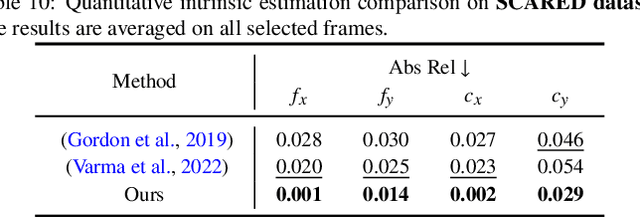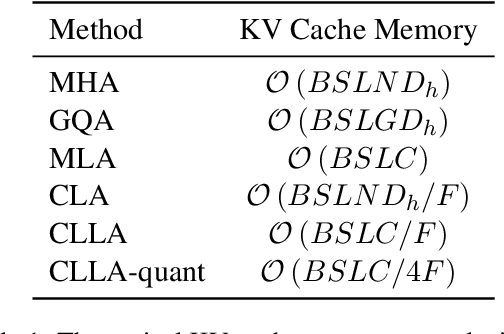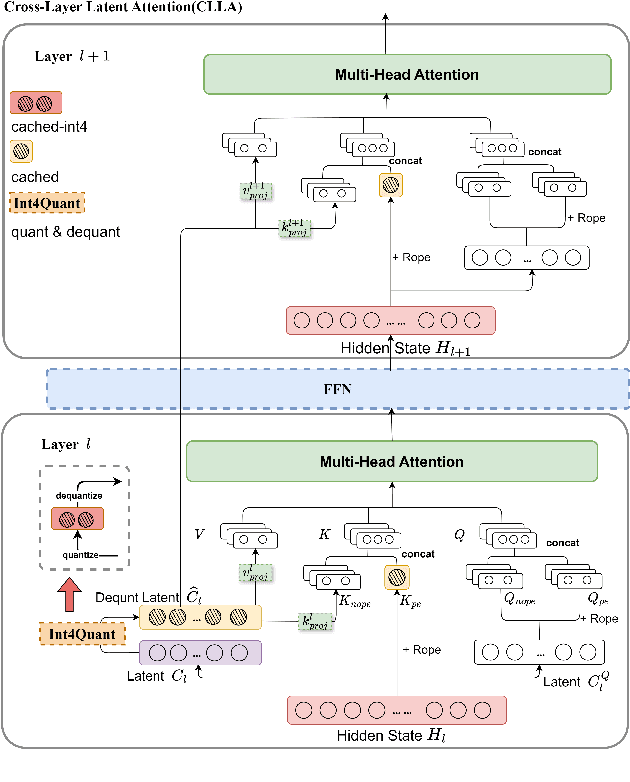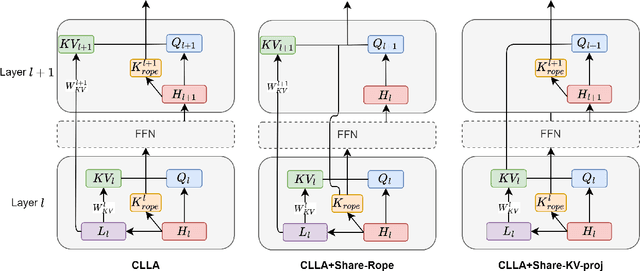An Wang
Comparative validation of surgical phase recognition, instrument keypoint estimation, and instrument instance segmentation in endoscopy: Results of the PhaKIR 2024 challenge
Jul 22, 2025Abstract:Reliable recognition and localization of surgical instruments in endoscopic video recordings are foundational for a wide range of applications in computer- and robot-assisted minimally invasive surgery (RAMIS), including surgical training, skill assessment, and autonomous assistance. However, robust performance under real-world conditions remains a significant challenge. Incorporating surgical context - such as the current procedural phase - has emerged as a promising strategy to improve robustness and interpretability. To address these challenges, we organized the Surgical Procedure Phase, Keypoint, and Instrument Recognition (PhaKIR) sub-challenge as part of the Endoscopic Vision (EndoVis) challenge at MICCAI 2024. We introduced a novel, multi-center dataset comprising thirteen full-length laparoscopic cholecystectomy videos collected from three distinct medical institutions, with unified annotations for three interrelated tasks: surgical phase recognition, instrument keypoint estimation, and instrument instance segmentation. Unlike existing datasets, ours enables joint investigation of instrument localization and procedural context within the same data while supporting the integration of temporal information across entire procedures. We report results and findings in accordance with the BIAS guidelines for biomedical image analysis challenges. The PhaKIR sub-challenge advances the field by providing a unique benchmark for developing temporally aware, context-driven methods in RAMIS and offers a high-quality resource to support future research in surgical scene understanding.
Point Tracking in Surgery--The 2024 Surgical Tattoos in Infrared (STIR) Challenge
Mar 31, 2025Abstract:Understanding tissue motion in surgery is crucial to enable applications in downstream tasks such as segmentation, 3D reconstruction, virtual tissue landmarking, autonomous probe-based scanning, and subtask autonomy. Labeled data are essential to enabling algorithms in these downstream tasks since they allow us to quantify and train algorithms. This paper introduces a point tracking challenge to address this, wherein participants can submit their algorithms for quantification. The submitted algorithms are evaluated using a dataset named surgical tattoos in infrared (STIR), with the challenge aptly named the STIR Challenge 2024. The STIR Challenge 2024 comprises two quantitative components: accuracy and efficiency. The accuracy component tests the accuracy of algorithms on in vivo and ex vivo sequences. The efficiency component tests the latency of algorithm inference. The challenge was conducted as a part of MICCAI EndoVis 2024. In this challenge, we had 8 total teams, with 4 teams submitting before and 4 submitting after challenge day. This paper details the STIR Challenge 2024, which serves to move the field towards more accurate and efficient algorithms for spatial understanding in surgery. In this paper we summarize the design, submissions, and results from the challenge. The challenge dataset is available here: https://zenodo.org/records/14803158 , and the code for baseline models and metric calculation is available here: https://github.com/athaddius/STIRMetrics
Endo-TTAP: Robust Endoscopic Tissue Tracking via Multi-Facet Guided Attention and Hybrid Flow-point Supervision
Mar 28, 2025Abstract:Accurate tissue point tracking in endoscopic videos is critical for robotic-assisted surgical navigation and scene understanding, but remains challenging due to complex deformations, instrument occlusion, and the scarcity of dense trajectory annotations. Existing methods struggle with long-term tracking under these conditions due to limited feature utilization and annotation dependence. We present Endo-TTAP, a novel framework addressing these challenges through: (1) A Multi-Facet Guided Attention (MFGA) module that synergizes multi-scale flow dynamics, DINOv2 semantic embeddings, and explicit motion patterns to jointly predict point positions with uncertainty and occlusion awareness; (2) A two-stage curriculum learning strategy employing an Auxiliary Curriculum Adapter (ACA) for progressive initialization and hybrid supervision. Stage I utilizes synthetic data with optical flow ground truth for uncertainty-occlusion regularization, while Stage II combines unsupervised flow consistency and semi-supervised learning with refined pseudo-labels from off-the-shelf trackers. Extensive validation on two MICCAI Challenge datasets and our collected dataset demonstrates that Endo-TTAP achieves state-of-the-art performance in tissue point tracking, particularly in scenarios characterized by complex endoscopic conditions. The source code and dataset will be available at https://anonymous.4open.science/r/Endo-TTAP-36E5.
Learning to Efficiently Adapt Foundation Models for Self-Supervised Endoscopic 3D Scene Reconstruction from Any Cameras
Mar 20, 2025



Abstract:Accurate 3D scene reconstruction is essential for numerous medical tasks. Given the challenges in obtaining ground truth data, there has been an increasing focus on self-supervised learning (SSL) for endoscopic depth estimation as a basis for scene reconstruction. While foundation models have shown remarkable progress in visual tasks, their direct application to the medical domain often leads to suboptimal results. However, the visual features from these models can still enhance endoscopic tasks, emphasizing the need for efficient adaptation strategies, which still lack exploration currently. In this paper, we introduce Endo3DAC, a unified framework for endoscopic scene reconstruction that efficiently adapts foundation models. We design an integrated network capable of simultaneously estimating depth maps, relative poses, and camera intrinsic parameters. By freezing the backbone foundation model and training only the specially designed Gated Dynamic Vector-Based Low-Rank Adaptation (GDV-LoRA) with separate decoder heads, Endo3DAC achieves superior depth and pose estimation while maintaining training efficiency. Additionally, we propose a 3D scene reconstruction pipeline that optimizes depth maps' scales, shifts, and a few parameters based on our integrated network. Extensive experiments across four endoscopic datasets demonstrate that Endo3DAC significantly outperforms other state-of-the-art methods while requiring fewer trainable parameters. To our knowledge, we are the first to utilize a single network that only requires surgical videos to perform both SSL depth estimation and scene reconstruction tasks. The code will be released upon acceptance.
Unveiling Client Privacy Leakage from Public Dataset Usage in Federated Distillation
Feb 11, 2025Abstract:Federated Distillation (FD) has emerged as a popular federated training framework, enabling clients to collaboratively train models without sharing private data. Public Dataset-Assisted Federated Distillation (PDA-FD), which leverages public datasets for knowledge sharing, has become widely adopted. Although PDA-FD enhances privacy compared to traditional Federated Learning, we demonstrate that the use of public datasets still poses significant privacy risks to clients' private training data. This paper presents the first comprehensive privacy analysis of PDA-FD in presence of an honest-but-curious server. We show that the server can exploit clients' inference results on public datasets to extract two critical types of private information: label distributions and membership information of the private training dataset. To quantify these vulnerabilities, we introduce two novel attacks specifically designed for the PDA-FD setting: a label distribution inference attack and innovative membership inference methods based on Likelihood Ratio Attack (LiRA). Through extensive evaluation of three representative PDA-FD frameworks (FedMD, DS-FL, and Cronus), our attacks achieve state-of-the-art performance, with label distribution attacks reaching minimal KL-divergence and membership inference attacks maintaining high True Positive Rates under low False Positive Rate constraints. Our findings reveal significant privacy risks in current PDA-FD frameworks and emphasize the need for more robust privacy protection mechanisms in collaborative learning systems.
Scaling Laws for Floating Point Quantization Training
Jan 05, 2025



Abstract:Low-precision training is considered an effective strategy for reducing both training and downstream inference costs. Previous scaling laws for precision mainly focus on integer quantization, which pay less attention to the constituents in floating-point quantization and thus cannot well fit the LLM losses in this scenario. In contrast, while floating-point quantization training is more commonly implemented in production, the research on it has been relatively superficial. In this paper, we thoroughly explore the effects of floating-point quantization targets, exponent bits, mantissa bits, and the calculation granularity of the scaling factor in floating-point quantization training performance of LLM models. While presenting an accurate floating-point quantization unified scaling law, we also provide valuable suggestions for the community: (1) Exponent bits contribute slightly more to the model performance than mantissa bits. We provide the optimal exponent-mantissa bit ratio for different bit numbers, which is available for future reference by hardware manufacturers; (2) We discover the formation of the critical data size in low-precision LLM training. Too much training data exceeding the critical data size will inversely bring in degradation of LLM performance; (3) The optimal floating-point quantization precision is directly proportional to the computational power, but within a wide computational power range, we estimate that the best cost-performance precision lies between 4-8 bits.
ETSM: Automating Dissection Trajectory Suggestion and Confidence Map-Based Safety Margin Prediction for Robot-assisted Endoscopic Submucosal Dissection
Nov 28, 2024Abstract:Robot-assisted Endoscopic Submucosal Dissection (ESD) improves the surgical procedure by providing a more comprehensive view through advanced robotic instruments and bimanual operation, thereby enhancing dissection efficiency and accuracy. Accurate prediction of dissection trajectories is crucial for better decision-making, reducing intraoperative errors, and improving surgical training. Nevertheless, predicting these trajectories is challenging due to variable tumor margins and dynamic visual conditions. To address this issue, we create the ESD Trajectory and Confidence Map-based Safety Margin (ETSM) dataset with $1849$ short clips, focusing on submucosal dissection with a dual-arm robotic system. We also introduce a framework that combines optimal dissection trajectory prediction with a confidence map-based safety margin, providing a more secure and intelligent decision-making tool to minimize surgical risks for ESD procedures. Additionally, we propose the Regression-based Confidence Map Prediction Network (RCMNet), which utilizes a regression approach to predict confidence maps for dissection areas, thereby delineating various levels of safety margins. We evaluate our RCMNet using three distinct experimental setups: in-domain evaluation, robustness assessment, and out-of-domain evaluation. Experimental results show that our approach excels in the confidence map-based safety margin prediction task, achieving a mean absolute error (MAE) of only $3.18$. To the best of our knowledge, this is the first study to apply a regression approach for visual guidance concerning delineating varying safety levels of dissection areas. Our approach bridges gaps in current research by improving prediction accuracy and enhancing the safety of the dissection process, showing great clinical significance in practice.
PDZSeg: Adapting the Foundation Model for Dissection Zone Segmentation with Visual Prompts in Robot-assisted Endoscopic Submucosal Dissection
Nov 27, 2024Abstract:Purpose: Endoscopic surgical environments present challenges for dissection zone segmentation due to unclear boundaries between tissue types, leading to segmentation errors where models misidentify or overlook edges. This study aims to provide precise dissection zone suggestions during endoscopic submucosal dissection (ESD) procedures, enhancing ESD safety. Methods: We propose the Prompted-based Dissection Zone Segmentation (PDZSeg) model, designed to leverage diverse visual prompts such as scribbles and bounding boxes. By overlaying these prompts onto images and fine-tuning a foundational model on a specialized dataset, our approach improves segmentation performance and user experience through flexible input methods. Results: The PDZSeg model was validated using three experimental setups: in-domain evaluation, variability in visual prompt availability, and robustness assessment. Using the ESD-DZSeg dataset, results show that our method outperforms state-of-the-art segmentation approaches. This is the first study to integrate visual prompt design into dissection zone segmentation. Conclusion: The PDZSeg model effectively utilizes visual prompts to enhance segmentation performance and user experience, supported by the novel ESD-DZSeg dataset as a benchmark for dissection zone segmentation in ESD. Our work establishes a foundation for future research.
Persistent Homology for Structural Characterization in Disordered Systems
Nov 22, 2024



Abstract:We propose a unified framework based on persistent homology (PH) to characterize both local and global structures in disordered systems. It can simultaneously generate local and global descriptors using the same algorithm and data structure, and has shown to be highly effective and interpretable in predicting particle rearrangements and classifying global phases. Based on this framework, we define a non-parametric metric, the Separation Index (SI), which not only outperforms traditional bond-orientational order parameters in phase classification tasks but also establishes a connection between particle environments and the global phase structure. Our methods provide an effective framework for understanding and analyzing the properties of disordered materials, with broad potential applications in materials science and even wider studies of complex systems.
Lossless KV Cache Compression to 2%
Oct 20, 2024



Abstract:Large language models have revolutionized data processing in numerous domains, with their ability to handle extended context reasoning receiving notable recognition. To speed up inference, maintaining a key-value (KV) cache memory is essential. Nonetheless, the growing demands for KV cache memory create significant hurdles for efficient implementation. This work introduces a novel architecture, Cross-Layer Latent Attention (CLLA), aimed at compressing the KV cache to less than 2% of its original size while maintaining comparable performance levels. CLLA integrates multiple aspects of KV cache compression, including attention head/dimension reduction, layer sharing, and quantization techniques, into a cohesive framework. Our extensive experiments demonstrate that CLLA achieves lossless performance on most tasks while utilizing minimal KV cache, marking a significant advancement in practical KV cache compression.
 Add to Chrome
Add to Chrome Add to Firefox
Add to Firefox Add to Edge
Add to Edge